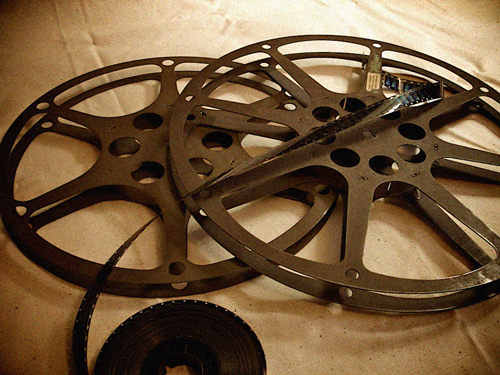Over the years, classic teen media has come to be associated with a variety of specific character archetypes. One of these is undoubtedly the quirky best friend: no chick flick is complete without this character’s witty commentary and jokes. However, their importance in the story often ends there, suffering the inevitable loss of agency that comes with being reduced to a prop whose only purpose is to support the lead.
Female friendships in particular have been subject to this treatment since the inception of the teen movie genre: think Rory and Lane, Cady and Janis, Gabriella and Taylor. In each of these examples, one character is pushed down in favour of the other’s time in the spotlight, pitting them against each other despite the appearance of an alleged friendship. Another version of this can be seen through examples like Serena and Blair, Buffy and Faith, or the prototypical Betty and Veronica. Women in these stories are not allowed to have meaningful relationships with each other unless men are involved.
The narrative refuses to centre around the female friendships, implying that they are less relevant to the plot than romantic relationships.
Recently, however, there has been a shift in how female friendships are portrayed in popular media. The past few years have seen a rise in media centering around non-romantic relationships between women: Netflix’s recent hit Do Revenge is a prime example.
Directed by Jennifer Kaytin Robinson, the movie revolves around high schoolers Drea (Camila Mendes) and Eleanor (Maya Hawke) as they plan elaborate revenge plots against the people who have wronged them. The two-hour runtime feels much longer as the story weaves through multiple subplots and twists that leave viewers reeling. The cast of undeniably talented actors paired with a killer soundtrack and costume design gives it all the makings of a future cult favourite.
Set up as part-satire, part-homage to early 2000s high school movies, Do Revenge is full of self-referential humour and plot devices that make you feel as if you are in on the same joke as the filmmakers. It borrows tropes from these movies to relate to its new audience’s generation, such as the scene in which Drea gives Eleanor a complete Clueless-esque makeover to turn her from a gangly oddball into a sexy, mysterious newcomer who can help her achieve her vengeance. Sarah Michelle Gellar even makes a cameo as the headmaster, a nod to Cruel Intentions – another classic revolving around sadistic private school students. References to Mean Girls, 10 Things I Hate About You, and She’s All That also made their way to the final cut.
Although incorporating this nostalgia is an effective way to appeal to its viewers, the movie’s attempt to do so through its use of slang tends to fall flat. It is tedious at its best, and entirely cringe-inducing at its worst. At times, the script reads as if it was written by someone trying to cram in as many buzzwords as possible.
“Peaking in high school is cringe anyway.”
— Drea, Do Revenge (2022)
The language is not the only aspect that gets a modern update. Token characters such as the “popular jock” are adapted to fit the Gen Z perspective: golden boy Mike (Austin Abrams) is your typical internet “soft boy” with painted nails and faux-sensitivity. He is written as one of the main antagonists, founding the “Cis Hetero Men Championing Female Identifying Students League” as a camouflage for his specific brand of misogyny. The movie earns its laughs through tongue-in-cheek satire like this, making fun of the very real people who use politically correct language to get away with their otherwise controversial behaviour.
What really made this such a worthwhile watch for me, however, was the way Do Revenge treated its central friendship. We see Drea and Eleanor go from being the best of friends, to hating each other’s guts, to returning to their original closeness—but through it all, they remain the most pivotal person in each other’s character arcs. The story grants both of them their respective endgame love interests without distracting from the importance of their relationship to the overall plot.
Neither of the characters would be the same person at the end of the movie if it was not for each other’s intervention. Even when they appear to hate each other, Eleanor is shown to be singularly obsessed with Drea in a way women typically are not permitted the agency to be. This goes both ways, as Drea finds in Eleanor a kind of companionship she has never experienced before. It is rare to see female friendships written like this, especially when they blur the line between romantic and platonic so boldly.
Mendes’ and Hawke’s sizzling chemistry is the missing puzzle piece that truly rounds out their performance and turns the movie into something to remember.
“Feeling alone is a specific type of pain, with distinct recognizable signs to the trained eye. Drea and I, we were two wounded soldiers on the battlefield of adolescence.”
— Eleanor, Do Revenge (2022)
The trend of teenage media centered around female friendships is not an entirely novel idea. Girl Meets World first aired in 2014, a spinoff to the original 1990s show that revolved primarily around the male perspective. It provided a portrayal of unconditional friendship that was important for young girls to see, with little interference from their male love interests. Booksmart, released in 2019, similarly revolves around two best friends going through the full high school experience together. And Netflix’s latest show Heartbreak High deals with the aftermath of what happens when its inseparable main characters fall out—with the added benefit of having a remarkably diverse cast.
Movies like Do Revenge spotlight relationships that do not often receive the kind of visibility they should. Teenage girls play pivotal roles in each other’s lives, and seeing that reflected in media is not only good representation, it makes for ingenious storytelling. As audiences and tastes change with the coming years, we might just be lucky enough to witness a new renaissance in teen media.


